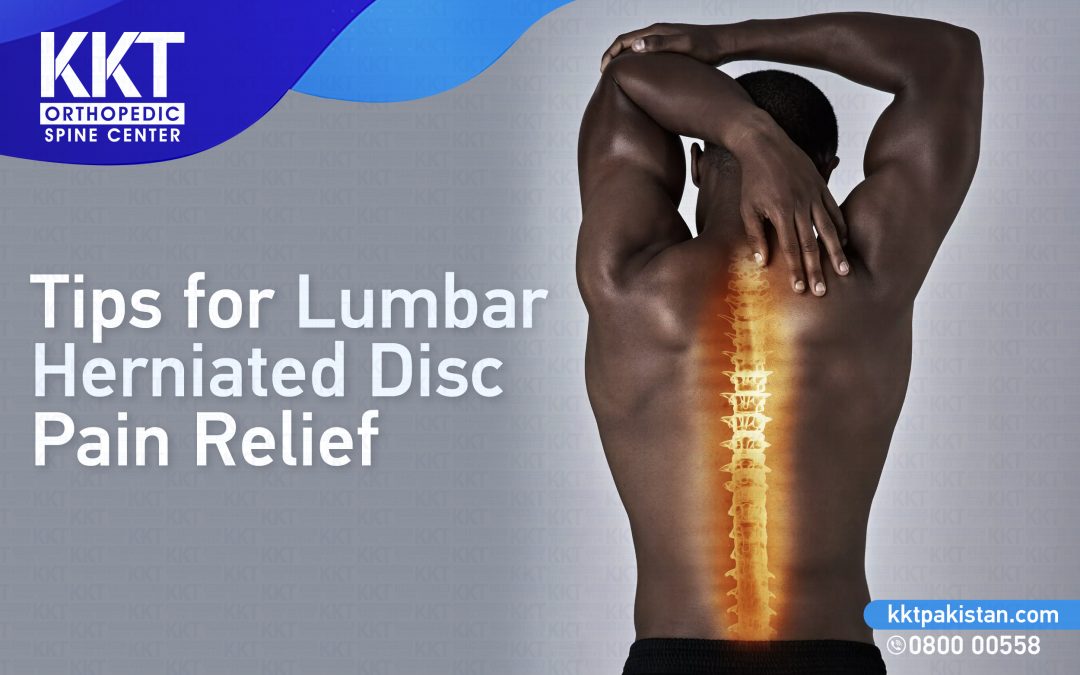If you are experiencing pain radiating down your shoulder, arm, buttocks, or leg, it may be a sign of a bulging or herniated disc. These symptoms occur due to herniated or slipped discs in the cervical (neck) or lumbar (lower back) spine. Slipped discs occur when the inner nucleus of the disc slips out of the annulus (the outer layer). It results in pinching/irritating the nerves extending out of the spine. Symptoms of a herniated disc may be a sharp, burning, radiating pain depending on the location. Lower back pain is one of the most common symptoms of a lumbar herniated disc. This article includes some tips for lumbar herniated disc pain relief.
Symptoms of Herniated Disc:
As mentioned earlier, lower back pain is one of the initial symptoms of a herniated disc. Some of the other symptoms of the lumbar herniated disc include the following:
– Sciatica:
Sharp or shooting pain extending from the lower back, and buttocks down to the back of the leg. This pain can be a result of pressure on the spinal nerve due to slipped disc in the lower back.
– Numbness & Weakness:
Tingling sensation, weakness, or numbness in the leg or foot.
Lumbar Herniated Disc Pain Relief: Tips
How to relieve herniated disc pain in the lower back at home? Pain relief from a lumbar herniated disc may look different for everyone. Following are some of the tips/ways to relieve herniated disc pain:
– Heat or cold therapy:
Lower back heat or cold therapy helps relieve tension in the muscles due to a lumbar herniated disc. There are several benefits of heat therapy which include:
- Increased blood flow
- Improvement in connective tissue elasticity
- Loosens muscle tightness
Whereas, cold therapy assists in decreasing the temperature of local tissue. This produces an anti-inflammatory and analgesic effect, thus reducing pain. Below is the method of applying heat and cold therapy to the lower back:
- In the morning, to decrease muscle tension apply heat therapy before stretching or performing exercises.
- Place a heating pad periodically on your lower back throughout the day. Note to use anything as a physical buffer (e.g., towel) to avoid any thermal injury.
- Cold therapy can also be applied in a similar manner, after stretching/exercises. Similarly, use a paper towel/physical buffer for cold therapy (ice pack) to avoid thermal injury.
– Exercise or physical activity – moderate:
There are some exercises that can help with lumbar herniated disc pain relief and improve the symptoms. These exercises/stretches can help strengthen the muscles that support the spine. They may include:
- Stretching exercises
- Aerobic exercises
- Massage, etc.
Consult a specialist when performing exercises/stretches.
Other tips for herniated disc pain relief include:
– Adjusting the sleeping position:
Lumbar herniated disc pain can get worse or be provoked due to an incorrect sleeping posture. Choosing a proper sleeping posture/position relieves pressure from the spine. Following are some of the tips:
- Pillow under your knees can help relieve pressure from the lower back
- For side sleepers, keep the spine and hips straight/aligned, and put a pillow between the knees.
– Improving the posture:
Maintaining a proper posture puts lesser pressure on the lumbar spine, therefore, helps relieve pain. This is why:
- Activities like wearing heels, sleeping on the stomach, sitting for too long, or standing for too long should be avoided.
- Moreover, when lifting heavy objects use your knees and hips – squat.
- Avoid repetitive bending
- Maintain a proper posture when sitting and standing.
When to seek medical attention?
In case of pain due to lumbar herniated disc(s), visit your nearby KKT center. Here at KKT, we treat herniated discs along with various other spine-related ailments without surgery. We have 8 operational centers across various metropolitan cities in Pakistan. For booking an appointment, click on the link below.

